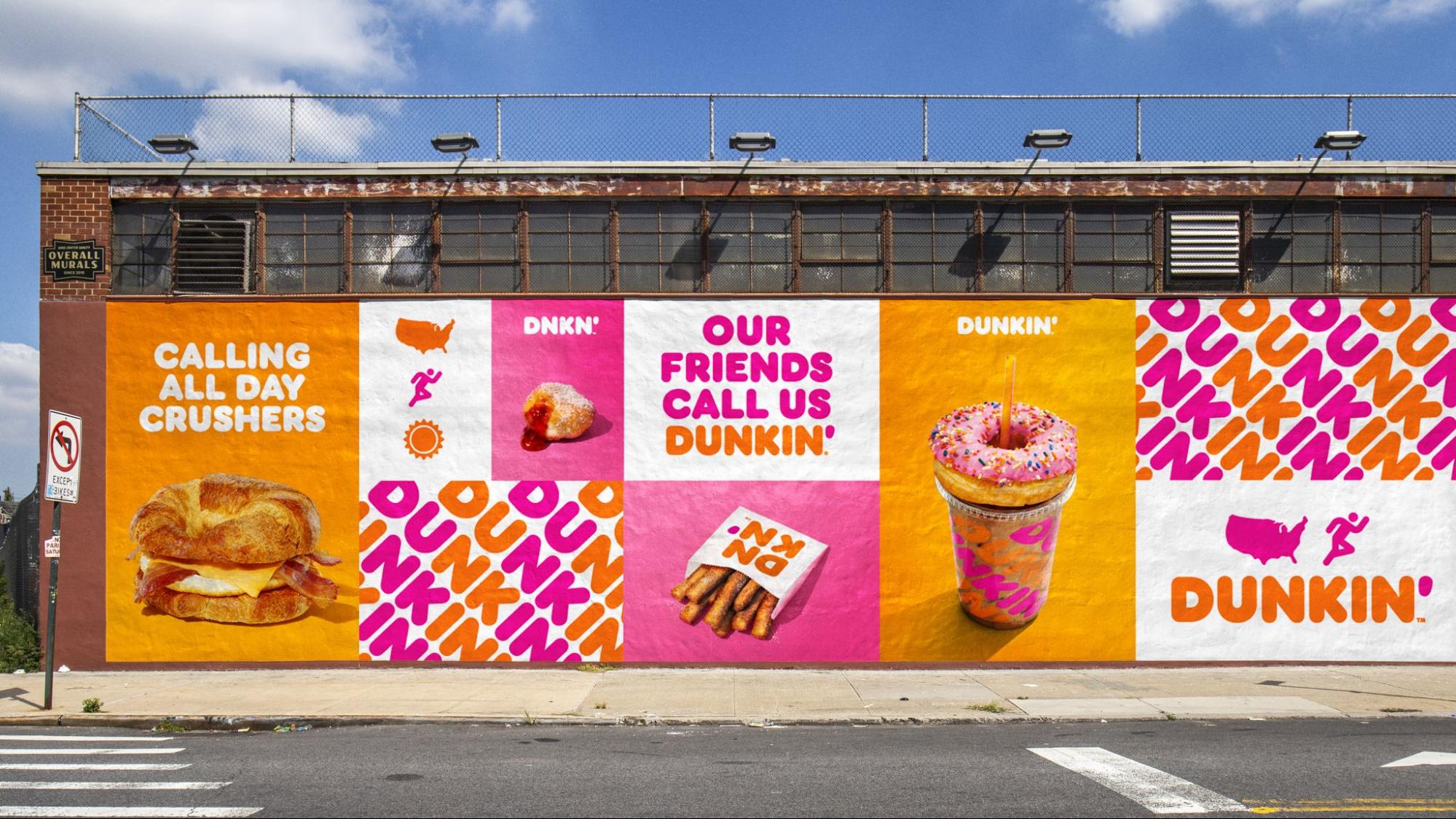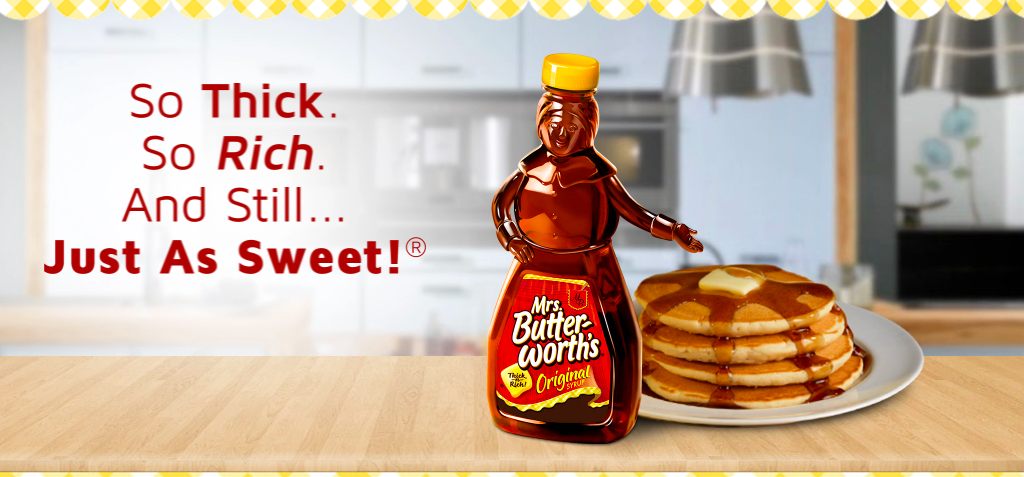Creating a brand is about pulling together the core ideas, motivations, and beliefs of your company and representing them in a coherent way. The best way to define a brand is through visuals: the logo, company colors, aesthetics, packaging design, uniform, and premises decor should all marry and make sense together.
Simplicity is the key to a memorable and iconic branding. If the average person cannot sum up your company’s brand in a few words then your message is not coherent enough.
What do you picture upon hearing the words, ‘Dunkin’ Donuts’? Probably a sugary round piece of junk food. Perhaps a cup of coffee to dip it in? Maybe the warm orange chunky lettering of the word ‘DUNKIN’?
Several ideas and feelings come to mind through the stylistic choices of the brand’s imagery:
- Thick, rounded font reminds us of hearty, heavy donuts;
- Dark orange and magenta colors on a white background are bright, fun, and striking, like a party;
- The abbreviation and use of an apostrophe give a laid-back, informal impression. This is a non-pretentious, inexpensive, on-the-go snack food.
There is nothing complicated about the brand messaging of Dunkin’ Donuts. It’s a clever play on words, so the consumer immediately understands the main idea: dunk your donuts [into coffee]. The alliteration makes it enjoyable to say, like a nursery rhyme. We immediately imagine the activity of dunking and start to picture the sweet snack and caffeinated beverage without consciously deciding to.

It’s worth noting the company rebranded to ‘Dunkin’ in January 2019 to call attention to increased speed of service as they introduced a multi-head tap system in stores for dispensing cold drinks more quickly.
Tony Weisman, Chief Marketing Officer, Dunkin’ US referenced “an incredible new energy” as well as “fun, joy and delight” in the rebrand announcement. Posters, social media posts, and redesigned cups and food packaging consistently communicate the brand message. We see the reference to speed in the graphic of a running person above the word “DUNKIN’” on the poster, and the abbreviated “DNKN” to appeal to a smartphone-using social-media-scrolling generation of consumers.
Brand Beginnings
Dunkin’ Donuts has outlets in 46 countries, but it certainly did not reach that scale overnight. The first step in brand development is to define the words, phrases, emotions, and images that accurately convey your company and its services or products.
Here are some key questions to consider:
- Who is my customer? Their age, income, lifestyle, concerns, and priorities
- What is my product/service USP? Price, quality, utility, exclusivity
- How do I want my consumer to feel?
- What colors and shapes best represent the mood I want to create?
If you are stuck for ideas, then take a look at customer feedback to see the emotions they express. A business that runs a courier service may hear from satisfied clients that they “took a weight off my shoulders”, “helped me reach an important deadline”, or “delivered an effective and effortless experience”. From these phrases, we can deduce feelings of relief, feeling supported, and life working a lot more easily as a result of the company’s assistance.
This may not seem like a significant exercise when there are hard facts and figures to nail down regarding inventory, accounting, regulatory compliance, and procurement. But before you go setting up your ecommerce website, you must have a clear concept of your brand identity.
Designing Brand Identity
To figure out who you are, you must decide who you are not.
Market research is therefore an important second stage in the brand development process. Once you have a clear idea of the sentiments your product/service evokes in the end-user, it is time to research the competition.
Here are some considerations when analyzing parallel businesses:
- Why would my customer choose my product over X company’s?
- How can I differentiate myself in a significant way from similar companies?
- What is unique about my product?
- What do I dislike about how that company brands itself, and how could I do better?
Asking yourself the above questions will help to focus on finding the gap in the market that your product or service fills. No matter your product niche, whether it is workflow software comparison or customized ice cube trays, defining yourself in contradistinction to your rivals is key.

Mrs. Butterworth’s Syrup is a highly distinctive brand because of the central character: the syrup’s chef whose voice is clearly heard throughout all promotional messaging.
Designing the bottle in the shape of the traditional mother figure who loves to feed her family is a simple way to create awareness of the brand’s mascot. Most bottles are not shaped like a human, so the etched details of clothing, hair, and face stand out from the competition.
Mrs. Butterworth as a human-shaped syrup dispenser is a fun and surprising gimmick to capture attention from shoppers with a wide range of syrup purchase choices. Appealing to children as well as parents, who may see themselves in the parent-type character sparking a sense of familiarity and favorability. Such personalized customer experiences leave a lasting impression of your brand.
Above all, a positive emotional engagement with your brand will ensure customers remember and want to buy your product in the future, should the occasion arise. Packaging is a major touchpoint for brand engagement; the customer will form instant judgments about the nature, quality, and reliability of your product based on the look and feel of your packaging.
Brand Consistency is Key
Once you have some clear ideas about the unique benefits of your product, the identity of your target consumer, and emotions you want to stir in him/her, you are well on your way to building a brand!
The next consideration is bringing all of your branding elements together in a clear blueprint for your small business. There are several elements of the brand to design in tandem so that consistency is achieved:
- Tone of voice
- Logo design
- Font choices
- Website appearance
- Brand colors
If that seems a lot to keep track of, that’s because it is. Ensure you are using some kind of team task management software to stay abreast of progress in each area.
Once you have settled on these core branding features, you can move forward to designing marketing campaigns and setting customer engagement strategies. After all, there is no point starting to speak unless your company knows what it has to say. Advertising and affiliate choices cannot be made until there is a clear set of guiding principles as defined by the brand identity.

Brand Building
It is natural and expected that your brand evolves over time. However, any alterations in brand identity should be subtle and gradual enough so as not to alienate your core customer base. Your early fans will hold a particular set of emotional responses to your brand based on your logo, packaging, and marketing communications (such as slogans, phrases and songs), which they can be surprisingly stubborn about holding onto. Owing to this, omnichannel campaigns should be planned with sensitivity around buyer expectations of your brand, and the CMO must carefully check continuity between new and old marketing messaging.
Now, it’s time to get creative!



